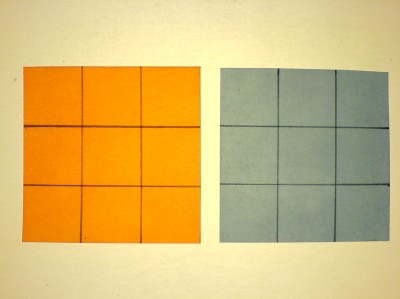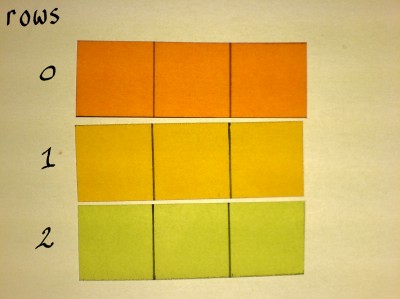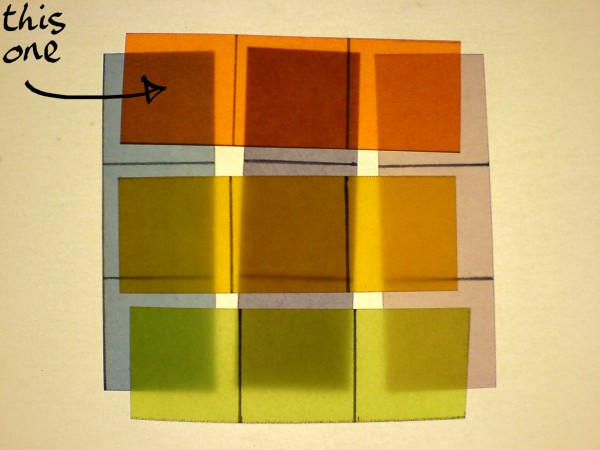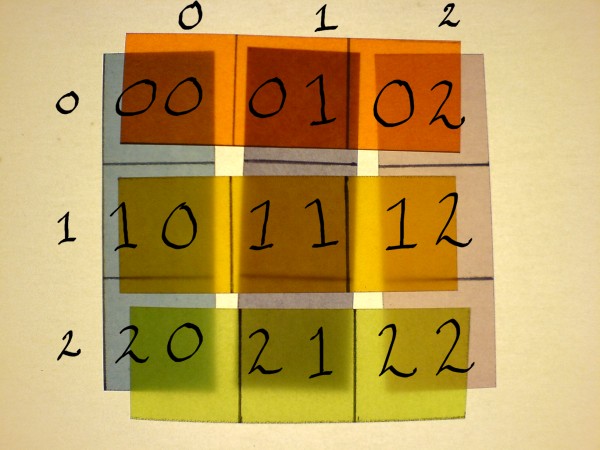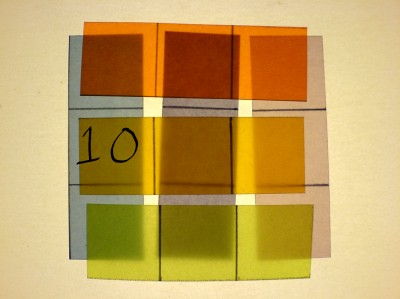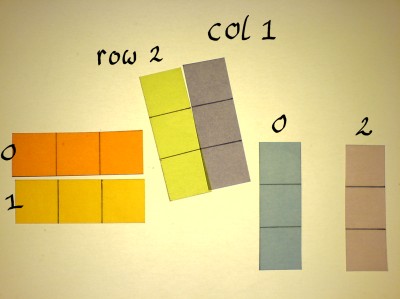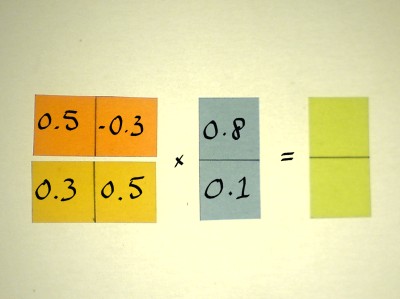Matrix Multiplication
|
I'm always messing up rows and columns of matrices when it
comes to putting results in the proper cell. I am the type that can
even screw a 2x2 matrix. The photoshoot for "Trip on the Complex Plane
- the Matrix View" had to be done twice for that very reason.
When you think of it: the series of row index numbers form a
column.
Very confusing at times. It is like the problem I have with aubergines
and courgettes. Only when I see an aubergine I can tell that the green
one must be a courgette.
In order to supply visual support for my poor brain I've
cut&pasted this page on matrix multiplication.
|

|
When two matrices shall be multiplied, the rows of the left one are
correlated with the columns of the right one. I might as well cut the
matrices into pieces directly. These single row and column strips are
now vectors.
I give those vectors slightly different teints, to distinguish them
in upcoming operations. Indexing starts with zero, at least when using
matrices in dsp-technique.
Start correlating matrix A row 0, with matrix B column 0:
Correlation of two vectors means to find the inner product: the sum
of products of corresponding cells. Let us do an example.
The inner product of two vectors is just one number. That number
should go in the correct cell of the output matrix. In the case of row
zero, column zero, it is not so difficult to find that cell. It is just
the first one we come across.
When continuing matrix multiplication, the cells of the output matrix
need to be identified. By convention, the first id-number of a cell is
that of it's row, and the second is that of it's column.
For example, the correlation product of matrix A row 1, and matrix B
column 0, goes into cell 10 of the output matrix.
Another example, just to get the feel of it:
These examples were with 3x3 matrices everytime. But matrices need
not be square. They can be rectangular, and they can consist of just
one row or one column. A typical configuration is: a one-column matrix
multiplied by a square matrix. The vectors must have equal length. I
will do one example of that, with
two-point vectors, because this has the scheme of complex
multiplication.
Maybe you wonder if matrix division is also possible. In a certain
sense, and under certain conditions, that can be the case. Compare
with: division by 4 is multiplication by 1/4. There is no seperate
operation for matrix division. Multiplication with the inverse is the
only option. Provided there is an inverse, because not al matrices have
one. Construction of matrices with known inverses may be in the top 3
of dsp-challenges.

